Hiking helps us to reconnect with nature and have peace of mind away from the busy and noisy daily routine. That said, having the best hiking tools makes it more rewarding. For those planning to take a night or two on camps, for example, having a good camping tent is a must.
Luckily, the modern camping tents are designed to make being in the great outdoors feel more like a five-star resort than a roughing-it. Most of these tents are ultralight to allow, and you can carry them on your shoulders for a long distance without tiring. They are also strong enough to withstand harsh outdoor conditions and serve you for years.
If you plan on starting camping escapades, getting the best tent should be at the top of your list. However, Australia has many camp tent brands, and you could easily get confused about the best brands.
In this article, you’ll get a detailed roundup of some of the best Australian ultralight tents that will ensure that all your camping adventures are a success.
What is a Lightweight Hiking Tents?
Lightweight backpacking tents employ minimalist designs to eliminate excess weight. Theoretically, they should be “heavy enough to withstand rain and wind” yet still “lightweight enough for you to carry it easily.”
Manufacturers can achieve this by replacing heavy components with lighter ones, such as carbon fibre pillars and one-layer walls. One trekking pole may even serve as a replacement for a standard tent pole in these cases.
How To Choose Ultralight Hiking Tent
There is no universally appointed “best” anything, and tents are not exceptional. Different people will consider different things when choosing a tent. However, the following are some of the most common factors you should consider when shopping for a camp tent.
1. Size And Capacity
Most tents designed for hiking are either one or two-person tents. There are apparent size constraints while trekking, so getting the size right from the start is essential.
While tracking down the ideal lightweight camping tent for a family can be tricky, you can get some of the best lightweight three-person camping tents.
Most tents designed for hikes can be folded into a compact bag slung over your shoulder.
2. Weight
Lightweight design tents should be a priority for backpacking shelters. You can only carry so much at a time, so it makes sense to prioritise lightweight options.
The size and kind of fabric used in the tent also play a role in its overall weight. Most tents designed for backpacking weigh less than two kilograms, while bigger models are also available. You would want to get a maximum of this, as doing so might compromise your hiking mobility and comfort.
3. Material (Durability)
Hiking tents are often made of nylon or polyester; however, other materials are used.
Nylon: Because of its portability and adaptability, it has replaced all other materials in widespread use. While this material can withstand some wear and tear, nylon can easily rip and tear and has a minimal tolerance for water.
Polyester: Thinner materials are necessary for a lightweight tent, but thinner polyester isn’t the strongest option.
Tents constructed of a polyurethane and Dyneema Composite Fabric are lightweight, durable and resistant to water and tears. These, too, have an expectedly high price tag.
How you care for your tent might also affect how long it lasts. When setting up your tent, look for a flat area away from trees or rocks. Your tent will last longer if you do this.
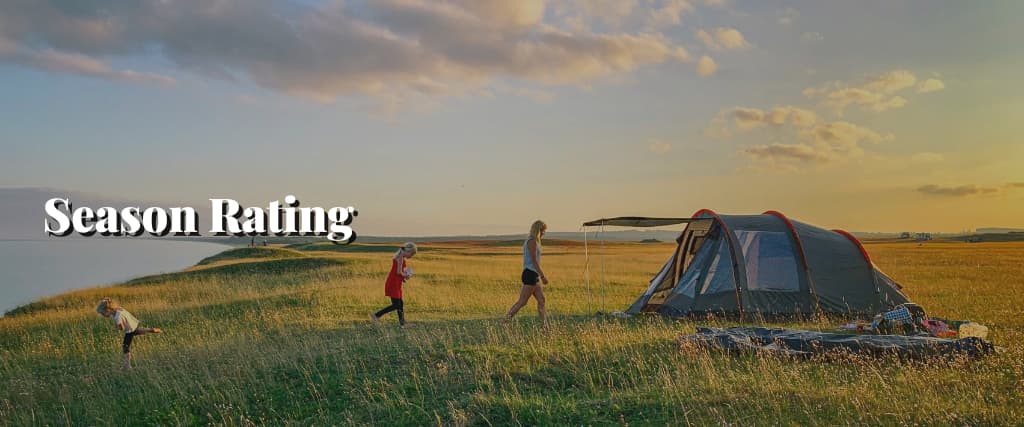
4. Season Rating
A good hiking tent should be versatile, as you will use it in a wide range of weather and terrain. There are three-season and four-season hiking tents available, and the vast majority perform admirably in various climates.
If you plan to camp in the highlands or during winter, consider investing in an all-season camping option. This is especially important if your region has a higher likelihood of wetter climates and humidity levels; these products are designed with extra protection for more extreme conditions.
5. Vestibules
The vestibule, or outside storage area under the fly of most trekking tents, is a convenient feature. Without bringing it inside the tent, your gear will be protected from the weather in this way. Two vestibules provide even extra space for storing stuff and keeping it out of the way of the entry to a Two- or three-person tent.
6. Ventilation
You can use a hiking tent with adequate ventilation in any weather. Tents for outdoor use can get too hot inside during the day, making sleeping difficult. However, you can easily remedy the issue with mesh doors and walls and a detachable fly.
High-quality mesh is crucial for achieving the desired effects of airflow and insect prevention. If the mesh covers the entire roof, you can take the fly off on warm evenings and enjoy a view of the sky.

7. Ease of Setting-Up
Exhausted hikers want to avoid the hassle of pitching a tent before turning in for the night. Setting up a tent requires teamwork because the poles usually disassemble or fold into a compact.
The size of the tent is only sometimes a good indicator of how simple it will be to set up. It’s a good idea to read the tent’s assembly instructions before purchasing to know the situation when setting up your new trekking tent for the first time.
8. Price
While there are many cheap, lightweight hiking tents online, remember that you’ll be sacrificing durability, ventilation, and other critical features in high-end tents. You’ll also likely need to replace it much sooner, meaning you won’t have saved any money in the long run. Choose a sturdy tent with all the practical features for your current and future hiking trips.
9. Internal storage and hooks
Hiking tents have limited interior space, so you shouldn’t load them with too many extras. Your belongings will be out of the way and out of harm’s way but still easily accessible in the storage pockets or loft inside. A lantern interior in your tent can provide much-needed light, but you’ll need a hook on the roof to hang it from so you don’t have to fumble around in the dark to find it.
Top Lightweight Hiking Tent Reviews Australia 2023
Here is a roundup of some of the best ultralight tents for hiking so you can pick the right one. This section also includes specifications for Australia’s top lightweight hiking tents. Let’s get started! With the overall best ultralight camping tent!
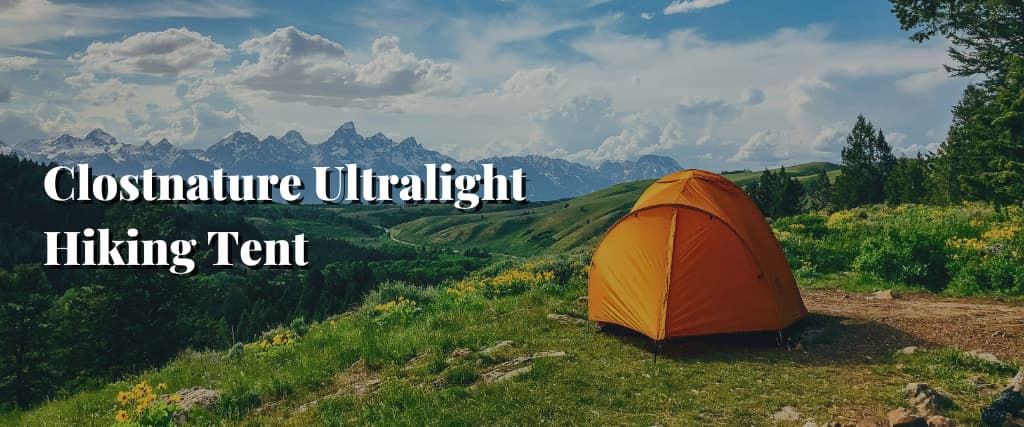
1. Clostnature Ultralight Hiking Tent
Specs:
Weight: 1.7kg
Season: All Season
Capacity: one-person
Material: Polyester
The Clostnature Ultralight trekking tent, designed for one, is among the smallest backpacking tents when packed. The tent’s PU 5000 covering, well-sealed joints, and excellent waterproof rating make it ideal for storing gear like bags and shoes.
It’s made with sturdy aircraft-grade pillars and has a mesh ventilated window for airflow.
This green or orange camping tent is an excellent selection for the solo hiker! Despite potential nighttime condensation and limited space for one person and their gear, it offers plenty of comfort.
Pros:
- Compact when folded
- Big, secure vestibule
- Sturdy and secure
Cons:
- Condensation can form overnight.
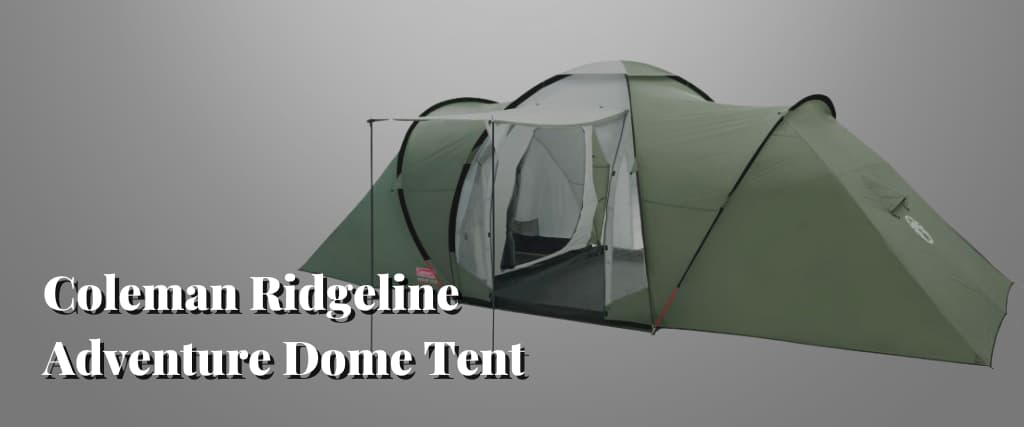
2. Coleman Ridgeline Adventure Dome Tent Review
Specs:
- Weight: 2.5kg
- Season: three Season
- Capacity: three-person
- Material: Polyester
This ultralight Coleman tent is best for three people. The tent comes feature-packed and surprisingly cheaper than most Australian tents in its league.
The Dome is easy-to-set-up with just two poles and boasts a high waterproof rating. It also has a high-quality fly, plenty of pegs, and wind-resistant guy ropes. The mesh interior allows you to use it as a makeshift screening shelter.
While the Coleman manufacturer claims this tent can hold up to three people, most think it’s best suited for two. Also, most users have complained of water leaking into the tent because of the design of the fly; nonetheless, the tent has a very high waterproof rating. As the heaviest choice, it’s also the most cumbersome.
Pros
- A cheapest and best lightweight three-person tent
- Equipped with a mesh interior for use on warmer days
- Superior water resistance rating
Cons:
- Tight for three
- The heaviest alternative
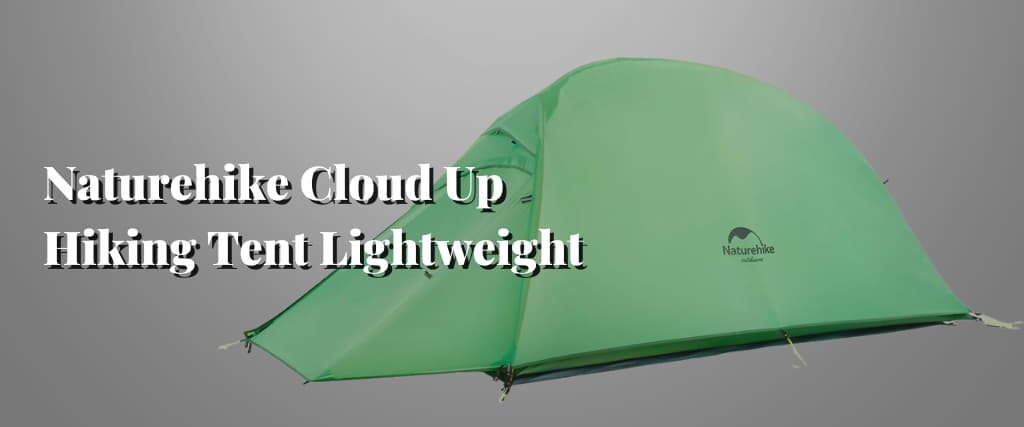
3. Naturehike Cloud Up Hiking Tent Lightweight
Specs:
- Weight: 1.5kg
- Season: three-season
- Capacity: one-person
- Material: Nylon
If you’re looking for a lightweight, well-ventilated one-person camper, look no further than this Naturehike tent. The tent’s two windows on each end help with ventilation and airflow to keep everything fresh.
Given that it is both waterproof and windproof and helpful in various other adverse weather conditions, this ultralight tent (compact folded size is 41 by 13 centimetres) is arguably the most incredible three-season three-season solution.
Several designs come in various colours, and while nylon is used most often, polyester-made tents are also available. There are wind ropes and a place to store shoes and bags.
Pros:
- The finest lightweight, three-season, one-person tent
- It has two openings for air circulation in the room
- Many hues to pick from
Cons:
- Constrained vestibule area
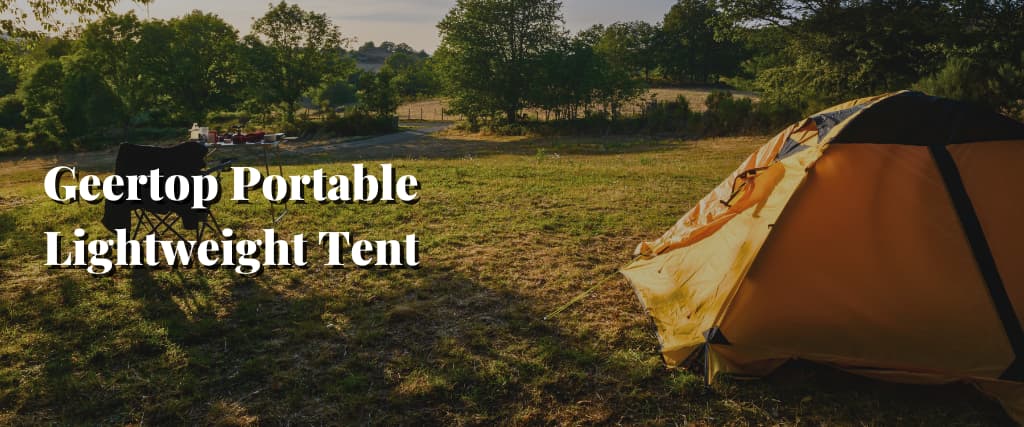
4. Geertop Portable Lightweight Tent
Specs:
- Weight: 1.5kg
- Season: All Season
- Capacity: Ane-person
- Material: Polyester
The Geertop tent suits hot climates due to its spacious internal mesh windows. There is a fly that completely encloses the tent, making it completely waterproof with a 5000 micrometres grade. The tent has two vestibules for footwear and baggage, plus interior pockets for keeping small objects in plain sight.
Despite certain drawbacks, such as a sub-standard carrying bag and a less-than-ideal floor, this is one of the best one-person light tents that is durable and compact enough to put into a standard hiking camper.
Pros:
- Good air circulation
- The fly covers the entire tent
- There’s a stowaway compartment and a foyer within
Cons:
- Low-quality carrying bags
- The floor is subpar
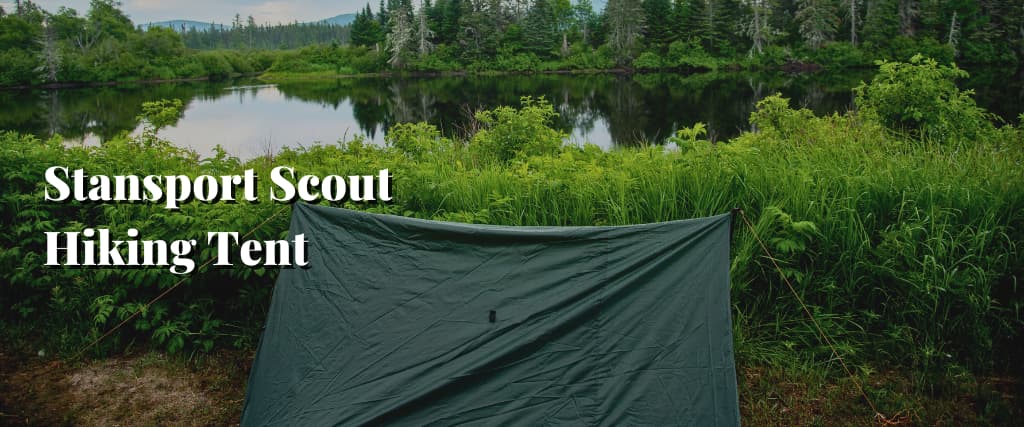
5. Stansport Scout Hiking Tent
Specs:
- Weight: 1.5kg
- Season: Three-Season
- Capacity: Two-person
- Material: Nylon
The Stansport Scout trekking tent is the most fantastic lightweight two-person backpacking tent you can get for the money. One person can set up this beautiful A-frame tent in minutes, and it weighs nothing.
The shelter is thin, so it can easily be damaged and won’t protect you from heavy rain (though a tarp might be helpful in such situations). Still, this option won’t break the bank if you’re searching for the finest lightweight two-person tent for around $200.
Pros
- Stylish A-frame tent
- It’s cheap and easy-to-set-up
- Small and light, the finest two-person tent
Cons:
- Easily torn
- Unsuitable for use in severe weather
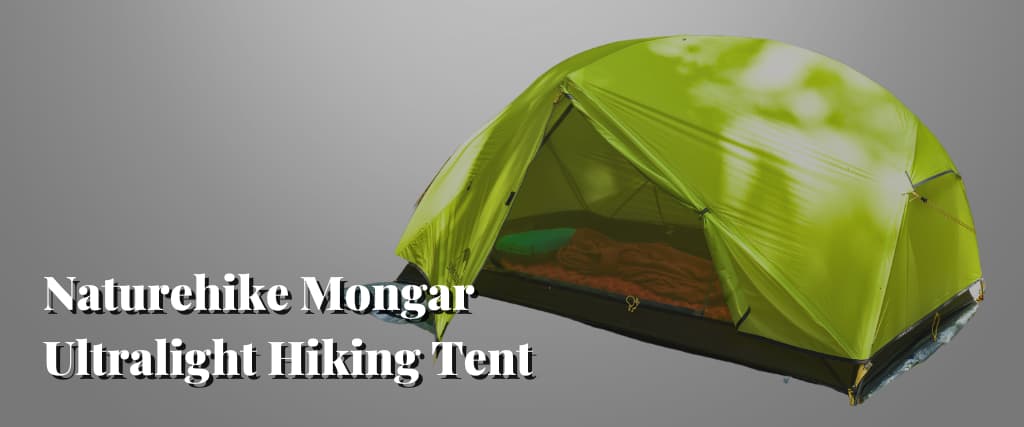
6. Naturehike Mongar Ultralight Hiking Tent
Specs:
- Weight: 2.1kg
- Season: Three-Season
- Capacity: Two-person
- Material: Nylon (20D)
You can’t go right with the Naturehike Mongar, one of the best lightweight tents for two people. The tent has two entrances for convenience and can be set up quickly and effortlessly by a single person. There are several external colour options, and the inside of this tent is spacious, ventilated, and packs down well.
This is an ideal tent for three-season weather, yet unfortunately, it will not hold up to the extreme cold. There are better choices than this if you’re looking for a tent that can endure the worst winter temperatures.
Pros:
- Two-doors
- Easy-to-set up
- Big interior space
Cons:
- Not suitable for severe conditions
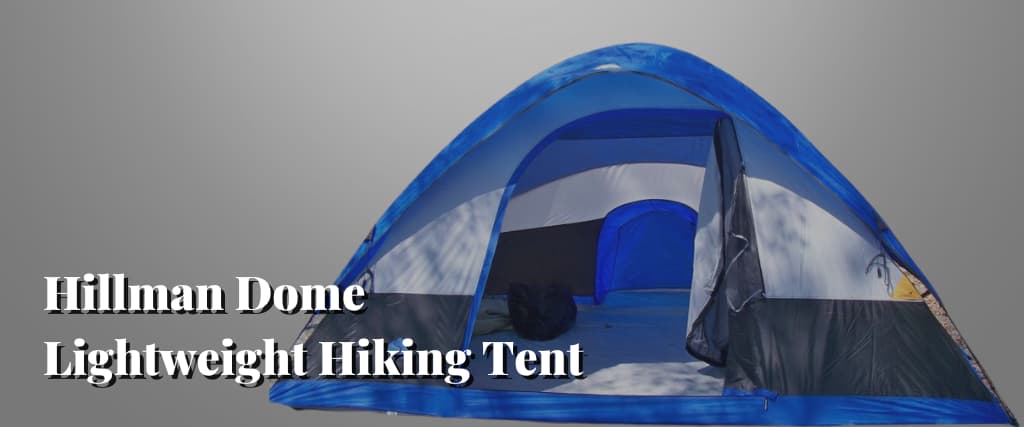
7. Hillman Dome Lightweight Hiking Tent
Specs:
- Weight: 2.3kg
- Season: Three-Season
- Capacity: Two-person
- Material: Polyester
The Hillman Dome is a lightweight two-person tent suitable for use in all but the harshest weather conditions. This tent’s big mesh panels allow plenty of fresh air flow. Its double-stitched openings and high waterproof ratings make it easy to set up and useable even in wet conditions.
Although Hillman Dome is a portable alternative, this tent is also one of the heavier ones on this list. If you want a tent that will survive for a long time, you should look for other superior tents. Nonetheless, this is a good choice if you’re on a tight budget.
Pros:
- Good ventilation
- Double-stitched joints
- Pocket-friendly
Cons:
- Heavy
- Not durable
8. Narmay Snakeskin Lightweight Dome Tent Review
Specs:
- Weight: 2.0kg
- Season: Three-Season
- Capacity: Two-person
- Material: Polyester
This tent has a snakeskin pattern, UV-resistant fabric, and a mesh interior. It has a high waterproof rating and comes with everything you need to set up shop in blustery weather. This is the greatest lightweight three-person tent option for people with average height and weight.
However, this tent is not the most compact backpack option because it is large when folded up. Refolding it might be a challenge as well.
Pros:
- Beautiful snakeskin pattern
- Waterproof and windproof
- Arguably the best for a trio
Cons:
- Bigger backpacking bag
- A challenge to refold

9. Teton Sports Quick Lightweight Tent
Specs:
- Weight: 2.3kg
- Season: All Season
- Capacity: One-person
- Material: Taffeta
This tent from Teton Sports is the perfect option if you’re looking for a one-person tent that packs down small and portable. With its permanent locking poles, you can set up the tent in less than a minute.
The Teton Sports tent has a rain fly and an interior mesh that you can unzip to enjoy the night sky. Moreover, the tent has a gear closet and double-sided zippers for easy access to your belongings.
Although this is the easiest-to-set-up single-person tent we’ve seen, its weight makes it less desirable than lighter options. Similarly, the rain cover does not come with any guy wires. However, it’s a pleasant and hassle-free choice.
Pros:
- Easy to set up
- Has waterproof fly
- It has a mesh inner
Cons:
- Heavy
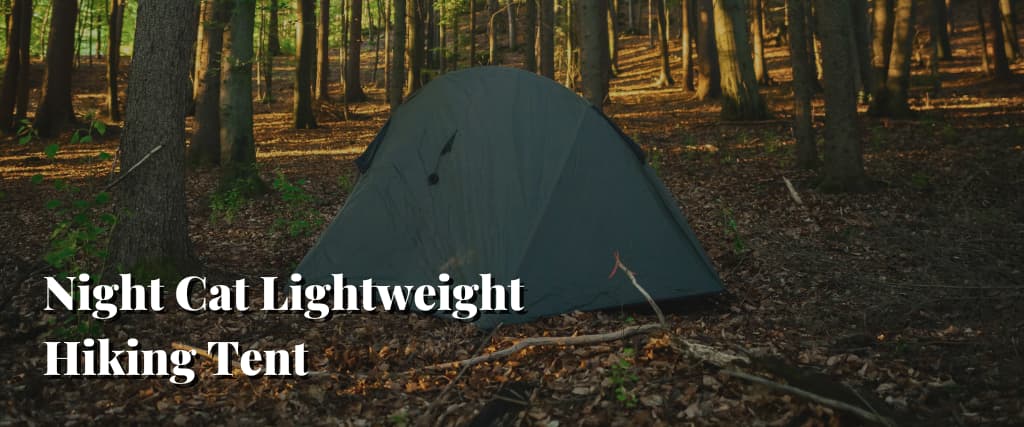
10. Night Cat Lightweight Hiking Tent
Specs:
- Weight: 2.0kg
- Season: All Season
- Capacity: Two-person
- Material: Polyurethane
This tent is a top pick for backpackers looking for a lightweight two-person tent. Night Cat Lightweight can be set up quickly and put into the carrying case with no hassle. The tent comes with everything you need to set it up: pegs, a fly, ropes, and an easy-to-use fly, as well as a single entrance with inside pockets and hooks.
Despite its “all-weather” label, this tent is not ideal for use in severe weather, be it rain or wind. Yet, it gets decent marks as a couple’s tent that you can set up quickly and easily.
Pros:
- Pocket-friendly
- Easy to setup
- Easy to set up fly
Cons
- Not suitable for extreme weather
Final Thoughts
It’s crucial to consider weight, size, durability, ventilation, and ease of set-up when searching for the best lightweight hiking tent in Australia. It’s essential to consider the weather and terrain you’ll be hiking in and your tastes and needs.
By taking the time to research and think about all of these criteria, you should be able to choose a tent that meets your needs for security and comfort while still being compact and easy to transport. You may do hiking in Australia safely and comfortably with the help of a high-quality hiking tent designed just for your needs.
